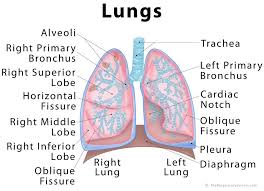A Multi-country conference was held with doctor from most major European Countries and the USA to review respiratory or lung function in patients with Myotonic Dystrophy. Patients with DM have a lot of issues with lung function and respiration. A framework or step by step checklist was reviewed and recommended at this conference. The conclusion of this conference is presented below. This is a very complex subject so print this and bring it with you to your doctor or pulmonologist. When you have myotonic dystrophy its important to have your lung function checked every 6 months or so.

Management of respiratory insufficiency is challenging in
DM because of the pathophysiology of the disease, which
affects both muscles and central respiratory pathways and
patients’ cognitive and behavioral characteristics. Although
there are no natural history data on the effects of respiratory
care on survival and on morbidity in patients with DM, results
of ventilation on survival and on better care in other
neuromuscular diseases indicate that adequate ventilatory care
may improve survival and QoL of patients with DM1 [41–43].
NIV use varies greatly among the different centers, e.g. varying
from 20 to 60% in adults with DM1, 20–40% of patients with
the congenital form, and 15–20% of patients with DM2. All
participants agreed on the need for standard assessments and
recommendations for standard of care.
Discussion between the specialists from different countries
led to the construction of initial standard protocols which are
the necessary preliminary steps for validation processes to
follow. Specifically, the workshop led to the creation of: 1) a
respiratory symptom check-list to be applied in everyday DM
clinic (Table 1); 2) a preliminary version of a screening
respiratory protocol to be applied on first assessment during
clinic (Figure 1); 3) proposal of criteria for NIV prescription to
be used specifically in patients with DM, based on the existing
ACI (Consensus Statement from the Agency for Clinical
Innovation Respiratory Network on Domiciliary Non-Invasive
Ventilation in Adult Patients) guidelines for NIV, including
recommendations for timing and tests to be performed on
follow-up assessments; 4) proposal of a secretion management
protocol (Figure 2).
The need for validation of these recommendations and for
further research to extend the evidence-base in certain key areas
was also highlighted and outline proposals to resolve these
deficiencies put forward. All participants agreed on the urge for
more natural history data and for specific pathways for
emergency care of acute respiratory insufficiency in DM.

